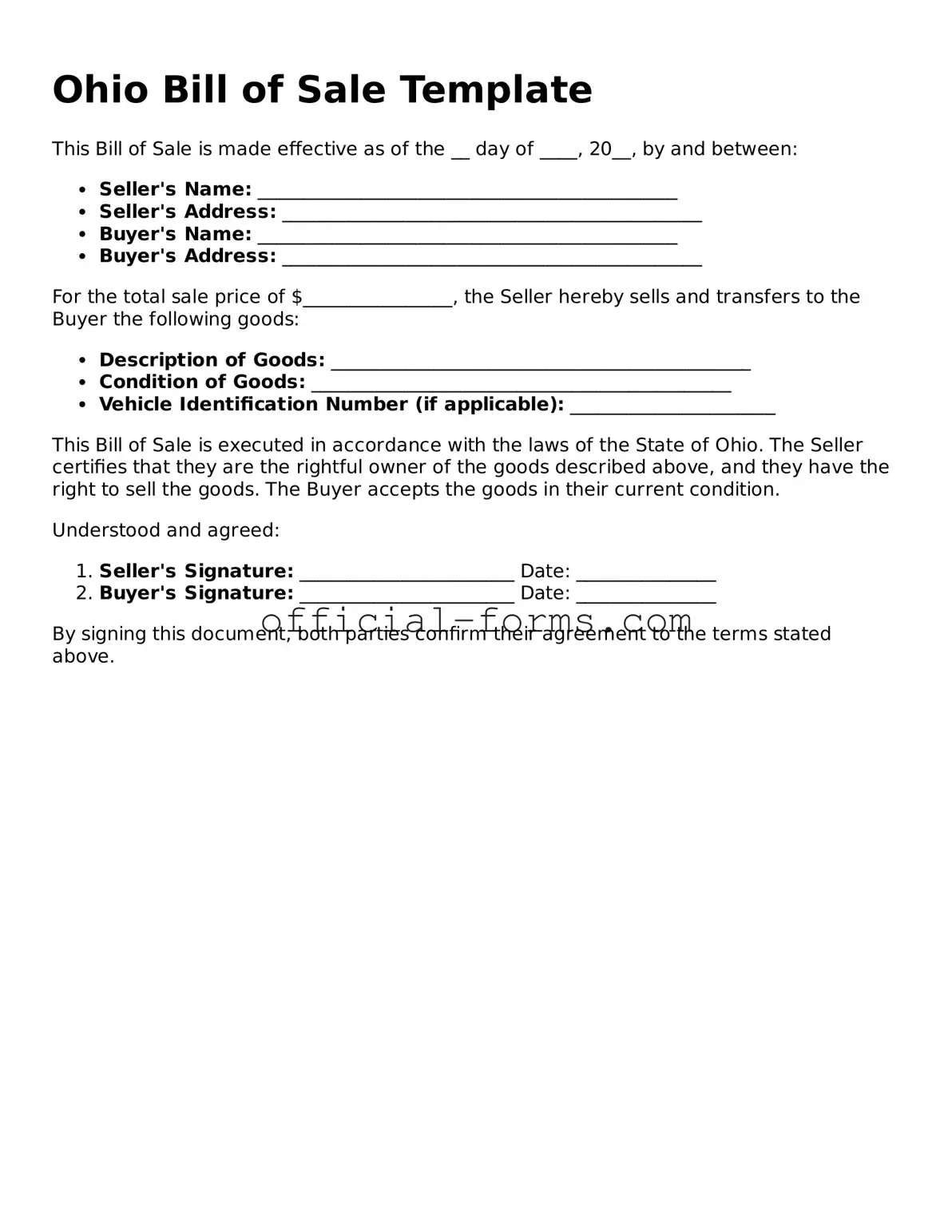Official Ohio Bill of Sale Document
The Ohio Bill of Sale form is a legal document that records the transfer of ownership of personal property from one party to another. This form serves as proof of the transaction and includes essential details such as the buyer's and seller's information, a description of the item, and the sale price. Understanding its importance can help ensure a smooth and legally sound transfer process.
Open My Bill of Sale Now
